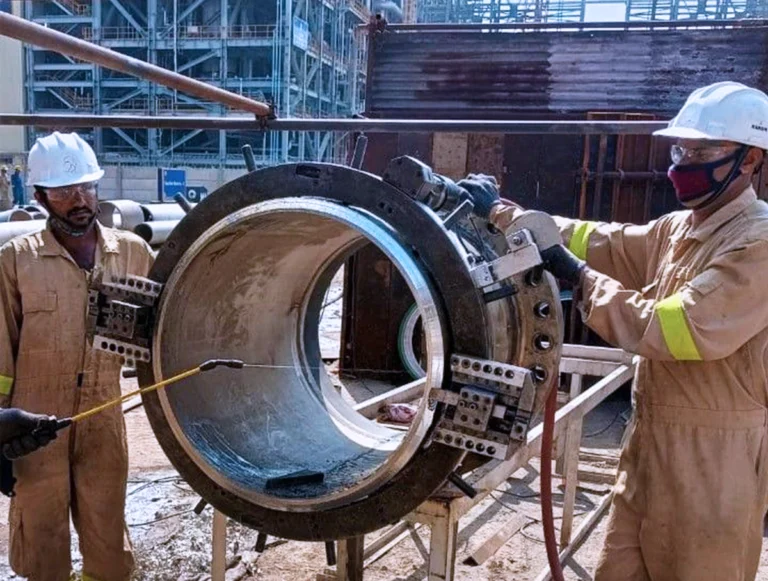Cold pipe cutting and beveling are needed within the oil and gas, construction, and manufacturing industries. It is done with the use of heat-based methods, which, besides creating massive issues with warping, degrading material, and, more importantly, placing employees at risk, came with the cold pipe cutting and bevelling machine, a real game-changer—providing precise and safe services with no hazards of high temperatures.
What is cold pipe cutting and beveling?
Cold pipe cutting and beveling is a cold, non-thermal process of cutting and shaping pipes. Using cold cutting machine for pipe metal pipe keeps the material intact without applying heat. Thus, these machines remove the risk involved in working with various sizes and kinds of pipes and provide a much more controlled and safe form of pipe processing.
How Does It Work?
The cold pipe cutting and bevelling machine is for cutting and creating inclinations on the pipes for various purposes. It has sharp cutting blades and a clamping mechanism that would hold the pipe in position, mounting the machine around the pipe as it starts a rotating motion of the cutting tool to cut through the material. Subsequently, beveling occurs by making the angle changes in the tool for beveled edge creation, which is a vital part of welding and pipe connections.
Advantages of Cold Cutting
Cold cutting machines provide high precision accuracy and produce clean, non-contaminant cuts without bevel. Such high accuracy is significant for safety, efficiency, and structural strength in industries that must achieve accurate measurements. Unlike traditional cutting methods, cold cutting does not cause heat-affected zones.
Which leads to the degradation of materials in heat-sensitive pipes and alloys. The lack of heating elements also minimizes the danger of fires, burns, and thermal injuries that may commonly occur with cold cutting to be safer, particularly in confined or hazardous areas where conventional methods are infeasible.
Most cold-cutting machines are hand-portable, allowing the performance of cutting and beveling on-site, thereby minimizing downtime and enhancing the project timelines. In addition, because cold cutting introduces no thermal stress at all, it does not warp or distort the material, and so, at every step of the process, the integrity of the pipe is maintained. With these merits, cold-cutting machines become highly versatile and reliability-based choices for the desired pipework efficiency, safety, and precision.
Applications Across Industries
Cold-cutting and beveling machines are used in various fields. They are in the oil and gas sector for maintenance, installations, and repairs of pipelines. In construction, these machines help shape and prepare the pipes for assembly. Cold cutting of pipes is essential in shipbuilding, chemical plants, and nuclear facilities, where safety and maintaining the material’s integrity outweigh other considerations.
Higher accuracy, safety, and efficacy of cold cutting have turned out to be one of the most crucial operations for industries that now must perform with higher performance and fewer risks in the modern context of manufacturing and construction. The ability of cold-cutting machines to provide cuts without heat-related damage and safety hazards allows for the development of workflow and guarantees more significant industrial roles as they transform the approach to pipework in various sectors.
